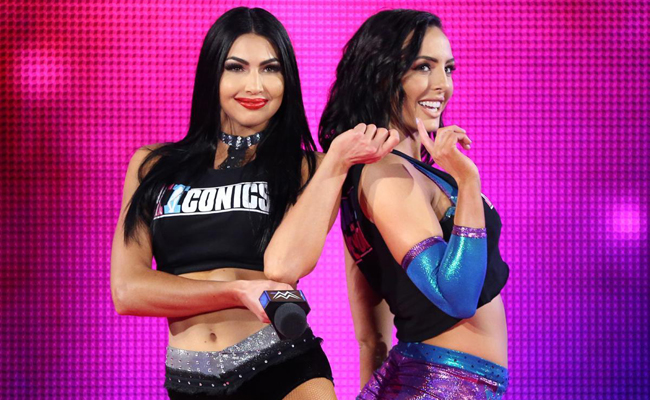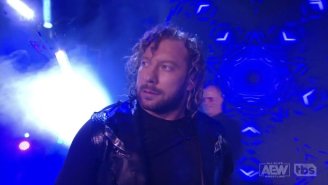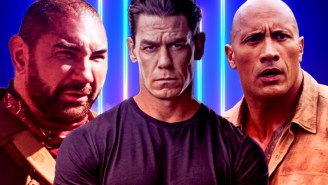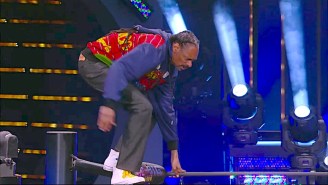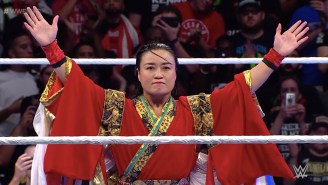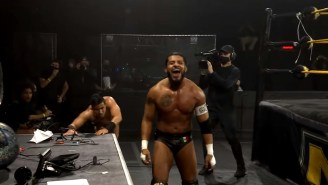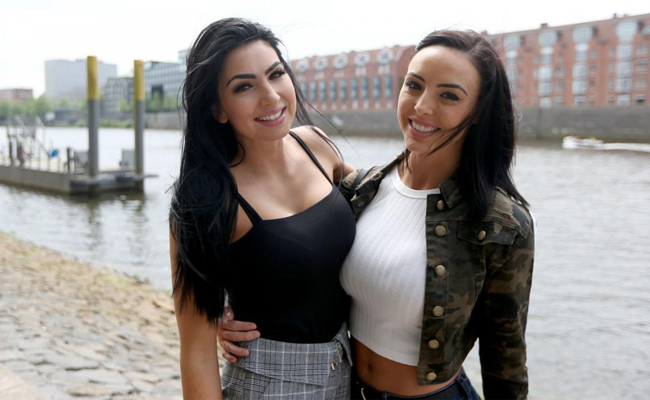
Whether they’re the Iconic Duo of NXT or the IIconics of Smackdown Live, Billie Key and Peyton Royce have been killing it for a while now. They’re good in the ring, great on the mic (and if you find them annoying, congrats on recognizing what great heels they are), and make excellent gifs. They debuted on Smackdown by cutting a great promo and then beating down Charlotte Flair, which ultimately cost her the Smackdown Women’s Championship. That’s a hell of a debut in this era when most NXT call-ups spend their first several months having meaningless matches and generally doing nothing that matters.
Now that the IIconics are being featured that much more prominently, I recently learned something surprising. There are fans of WWE — even fans of the IIconics themselves — who don’t see Peyton and Billie as a couple. Now I’m not saying there’s a wrong way to enjoy them. Wrestling is art, and art is subjective. It just honestly hadn’t occurred to me that everybody wasn’t on the same page with regard to the love between these two beautiful and terrible people.
A quick aside before we go on: I’m talking about kayfabe here, about storytelling. I’ve heard the same rumor you probably have about who Cassie McIntosh is dating, and I don’t know anything about Jessica McKay’s personal life at all. I’m not here to talk about any of that, and don’t really consider it my business.
But Peyton Royce and Billie Kay, the characters? They’re definitely girlfriends, or Iconic Life Partners, as they’ve repeatedly called each other on social media.
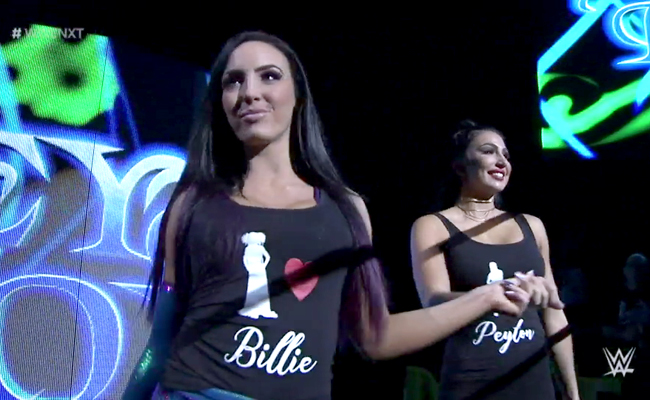
I spend most of my time in the online wrestling community talking to other LGBTQ fans, so I knew I wasn’t alone in this viewpoint. I decided to talk to some other queer folks for this story, to help convey where we’re coming from. Erin Cline, co-host of the Not Your Demographic podcast, has no doubts in her mind:
Absolutely they’re girlfriends. The affection they show each other, as well as their hand holding entrance, and the way they refer to themselves as a unit “when we win” “when we’re the champion” etc seem to really support the idea that they’re a couple. There’s no real difference between the way they treat each other and the way Miz/Maryse or Mike/Maria treat each other, but there IS a difference between other friendships such as The Bar or Becky/Charlotte and the kinds of interactions and affection those pairings show each other. The fact that they do all of this in canon on television too seems to point more towards a couple than just two very good gal pals.
Some may question if any of this is deliberate, while some others may question if that matters. I think they know what they’re doing, though. And not just because in NXT they wore shirts with hearts and each other’s names (although that helps). All the choices they make, not just holding hands on the way to the ring, but often wrapping their arms around each other during interviews — as Erin points out, “best friend” teams don’t do that. Couples do that.
https://www.youtube.com/watch?v=C2WL22l46G0
Artist Lauren Moran agrees:
Their overall affection for each other: the holding hands, finishing each other sentences. It comes across as different than Sasha and Bayley’s relationship. Not to say that two friends can’t be close like Billie and Peyton, but you just pick up that vibe so much from them.
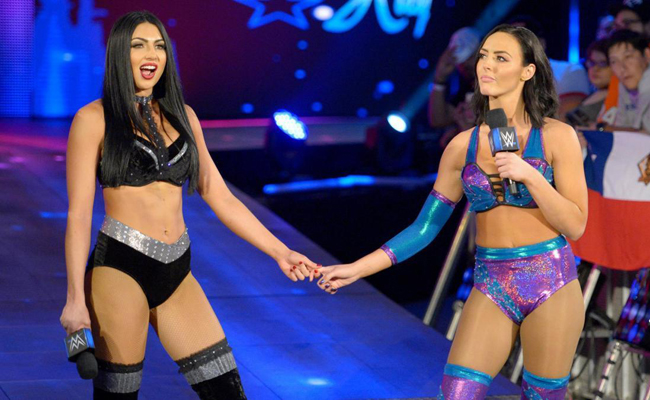
In his groundbreaking book Making Things Perfectly Queer: Interpreting Mass Culture, Alexander Doty argues that queer readings of heteronormative texts should be understood not as inventing something that isn’t there, but as finding something that is there, something that’s been put there by writers, performers, or whoever else. This subtextual groundwork isn’t always intentional (nor does it need to be), although I suspect this is is one of the times when it is.
Megan Nielsen, co-host of the Hard Times Podcast (full disclosure: I’m the other host) has a similar perspective:
Oh, I definitely feel like their characters are engaging in what I would call ‘girlfriend behavior.’ There’s nothing really explicit in their language, but constantly touching each other, especially the hand and hip holding really puts it over the edge for me. It’s also more fun for me to think of them as like an obnoxious power couple as opposed to just best friends.
Megan also adds an important spin with the part about it being more fun. Wrestling’s all about fun, after all. For LGBTQ people, feeling a little more included makes things more enjoyable. While other wrestling companies have begun featuring more overtly queer storylines, WWE seems to not quite be there yet. I’d love to eventually see Sonya Deville’s real sexuality, for example, acknowledged in a non-insulting way within WWE. I’d love to see the inclusivity of the Bálor Club become more than just a T-shirt and a Mania entrance.
Until WWE starts giving us things, at least we have this. Here’s Erin Cline again, with more on the subject:
As a queer person, seeing representative characters that reflect my life both bonds me closer to the characters, as well as normalizes that queer people exist. By having characters that are queer, wrestling reaches out past the perceived bubble of who wrestling is ‘for’ and opens the door for more people with more experiences to exist comfortably in this fandom. It also exposes people who may not know real queer people to the idea that queer people exist and are not something to be scared of.
Who knows if Stephanie McMahon even remembers the promise she made almost two years ago to incorporate LGBT characters and stories into WWE. Maybe she thinks that promise is already fulfilled, or maybe she doesn’t think about it at all. Until WWE actually makes that effort as a company, we’ll take what we can get. And the truth is the IIconics are giving us a lot. Some might even say they’re giving us life.
